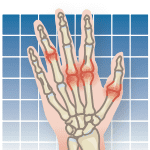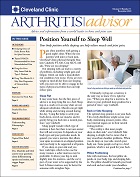Osteoarthritis (OA) is the most common cause of knee pain in people over the age of 50, but a formidable list of other conditions can cause similar pain. You might not associate some of the ailments on that list with the knee. "Gout, bursitis, stress fractures, meniscus damage, and osteonecrosis are just a few of the problems that can affect the knees of older adults," says Susan Joy, MD, director of Womens Sports Health at Cleveland Clinic and a primary-care physician specializing in musculoskeletal disorders. Gout usually affects the big toe, but it can also affect the knees, ankles, wrists, fingers, and elbows. It is caused by an accumulation of needle-like crystals of uric acid in the connective tissue or in the space between the two bones of a joint. How do you know whether its gout or knee OA? "Your doctor may have to perform tests to give you a definitive answer, but you can provide information about your symptoms that could make a diagnosis easier," says Dr. Joy. Typical knee OA symptoms are pain with activity, limited range of motion, stiffness, swelling, joint tenderness, and the feeling that the knee may not support your weight.
To continue reading this article or issue you must be a paid subscriber.
Sign in






























